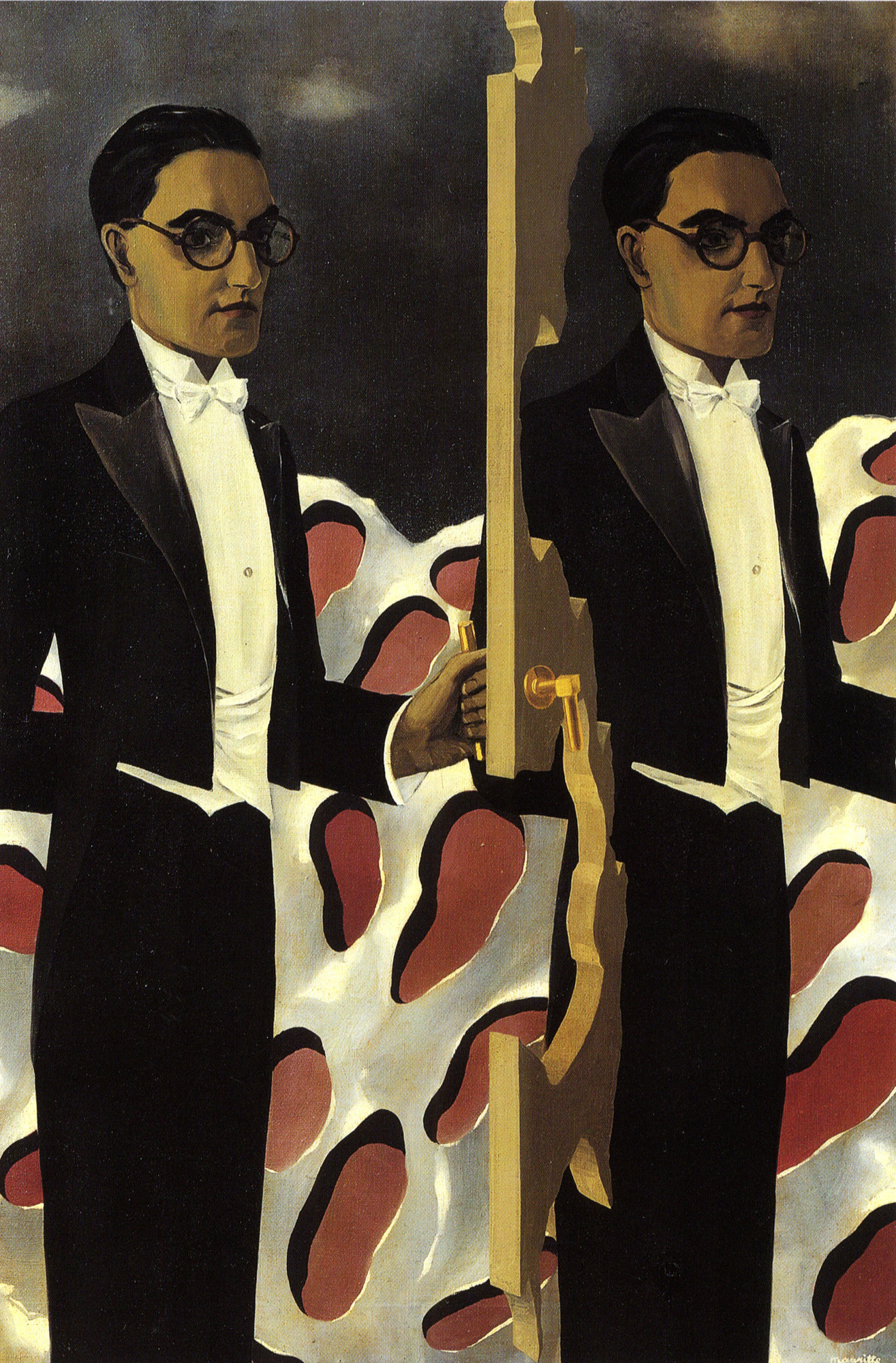Narrator: After experimenting with abstraction early in his career, Magritte began to pioneer a new approach to figurative painting.
Curator, Anne Umland: He set himself the task, in his own words, of "making everyday objects shriek out loud" and of creating works that could "challenge the real world."
Narrator: The Lost Jockey, from 1926, was among the first in this new style.
Anne Umland: The curtains on either side of this picture announce, I think, this is a highly artificial, theatrical, and staged image.
It's remarkably static, despite the various signs of movement that it includes. You could look at the horse's outstretched nose, for instance, and the way his mane and tail fly back, and the jockey raises his crop up. And yet the horse, although it has a lot of forward momentum, really isn’t going anywhere. It's surrounded by this forest of strange chess-like forms, each one of which is cut from sheet music. Magritte often referred to these shapes as bilboquets, which was the French word for a child's wooden cup and ball toy.
Narrator: He used this form repeatedly in his early work, mining its diverse visual connotations, such as table legs, spindles, mannequins, and trees.
